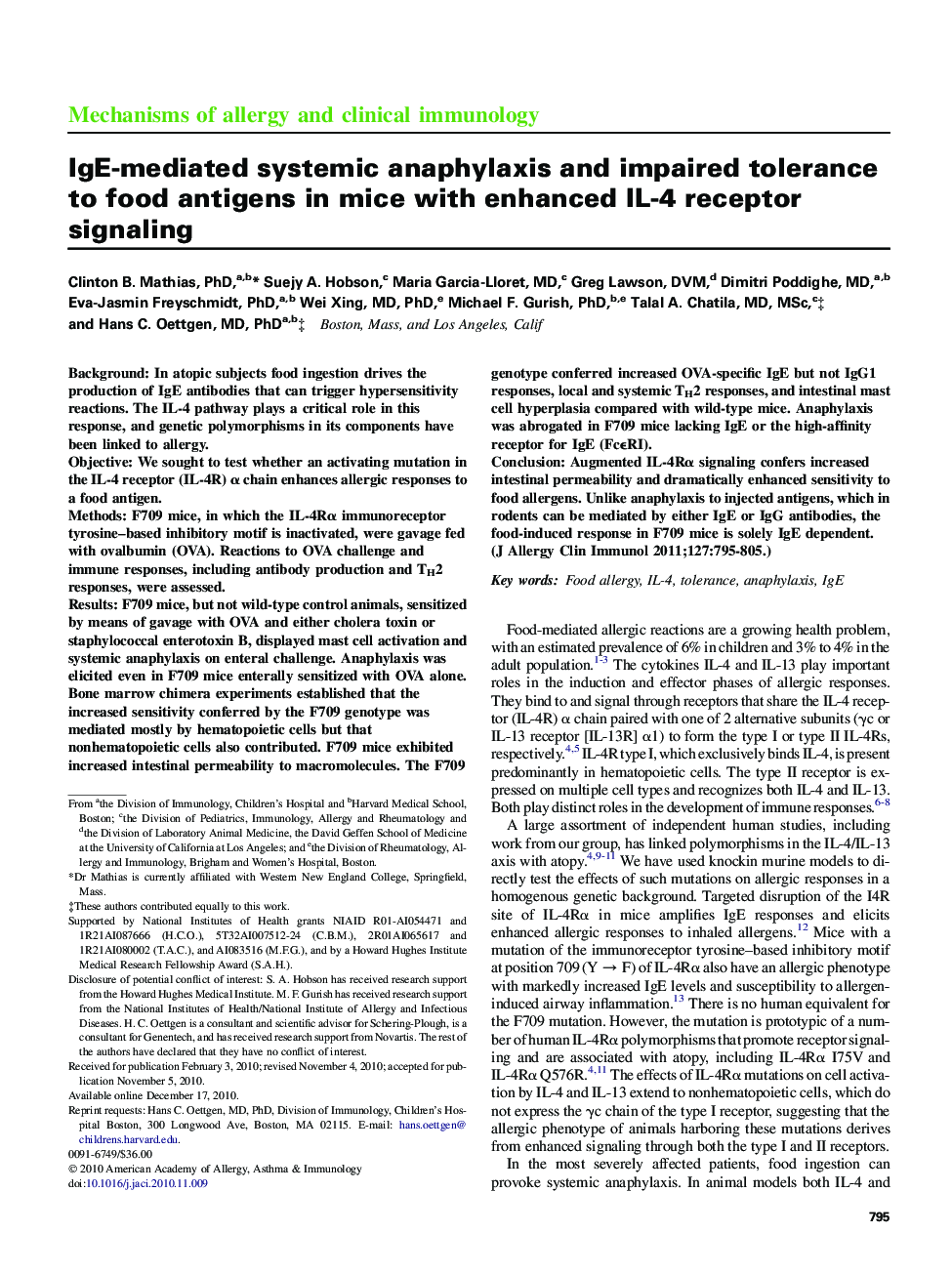| Article ID | Journal | Published Year | Pages | File Type |
|---|---|---|---|---|
| 6067106 | Journal of Allergy and Clinical Immunology | 2011 | 17 Pages |
BackgroundIn atopic subjects food ingestion drives the production of IgE antibodies that can trigger hypersensitivity reactions. The IL-4 pathway plays a critical role in this response, and genetic polymorphisms in its components have been linked to allergy.ObjectiveWe sought to test whether an activating mutation in the IL-4 receptor (IL-4R) α chain enhances allergic responses to a food antigen.MethodsF709 mice, in which the IL-4Rα immunoreceptor tyrosine-based inhibitory motif is inactivated, were gavage fed with ovalbumin (OVA). Reactions to OVA challenge and immune responses, including antibody production and TH2 responses, were assessed.ResultsF709 mice, but not wild-type control animals, sensitized by means of gavage with OVA and either cholera toxin or staphylococcal enterotoxin B, displayed mast cell activation and systemic anaphylaxis on enteral challenge. Anaphylaxis was elicited even in F709 mice enterally sensitized with OVA alone. Bone marrow chimera experiments established that the increased sensitivity conferred by the F709 genotype was mediated mostly by hematopoietic cells but that nonhematopoietic cells also contributed. F709 mice exhibited increased intestinal permeability to macromolecules. The F709 genotype conferred increased OVA-specific IgE but not IgG1 responses, local and systemic TH2 responses, and intestinal mast cell hyperplasia compared with wild-type mice. Anaphylaxis was abrogated in F709 mice lacking IgE or the high-affinity receptor for IgE (FcεRI).ConclusionAugmented IL-4Rα signaling confers increased intestinal permeability and dramatically enhanced sensitivity to food allergens. Unlike anaphylaxis to injected antigens, which in rodents can be mediated by either IgE or IgG antibodies, the food-induced response in F709 mice is solely IgE dependent.
